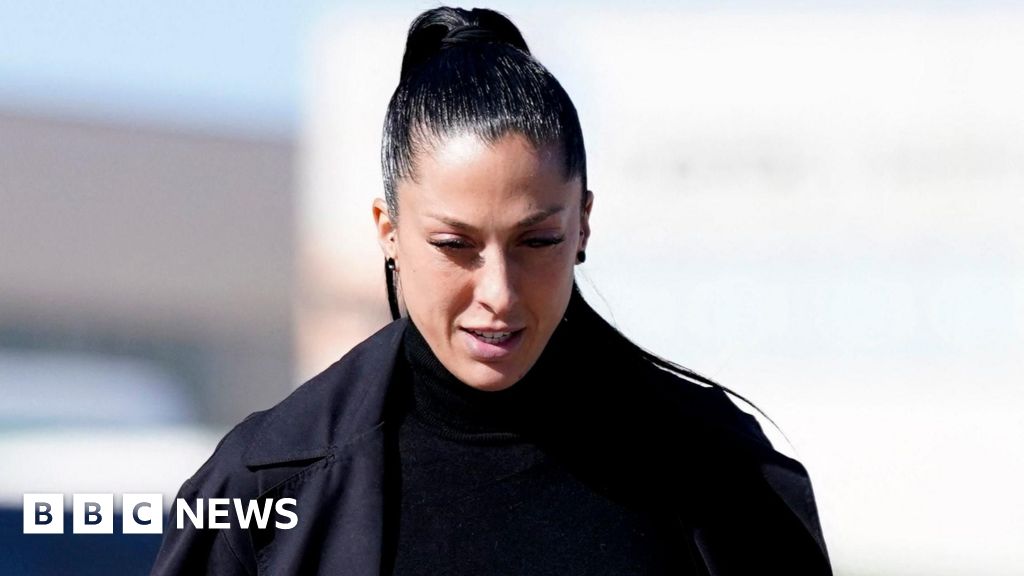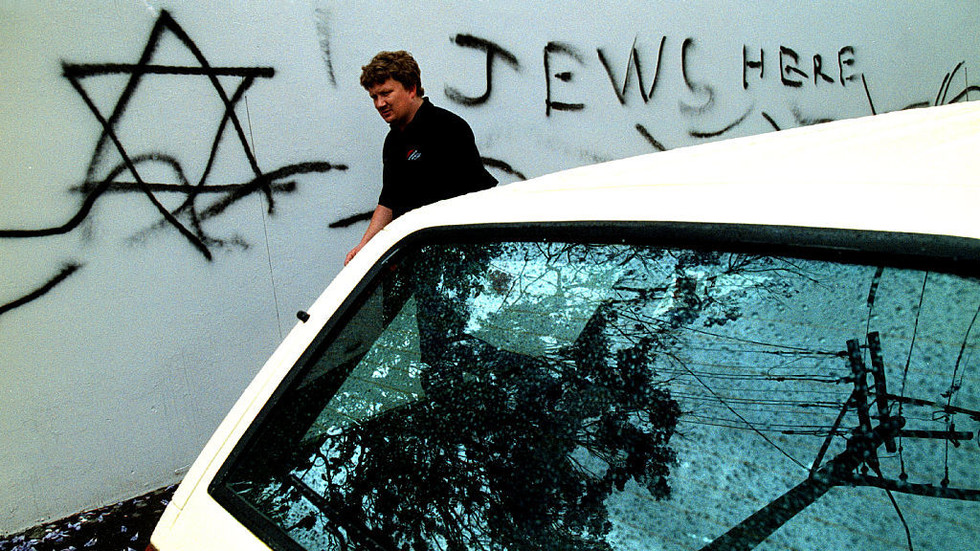Tehran, Iran – United States President Donald Trump has quickly restarted his pressure campaign against Iran while emphasising he does not want Tehran to have a nuclear weapon.
Iranian authorities have unsurprisingly signalled they do not intend to capitulate, and that the country’s official policy of not pursuing a nuclear bomb remains in place, but they have left room for dialogue.
Let’s take a look at the complex state of play almost seven years after Trump initially embarked on the path of “maximum pressure”, a policy that Tehran maintains has been a failure.
What did Trump say about Iran in the White House?
Trump claimed on Tuesday that he was reluctant – for unstated reasons – to greenlight a new pressure campaign on Iran, but nevertheless promised to drive Iranian oil sanctions to “zero”.
At the same time, he stressed that his only priority is that Iran does not obtain a nuclear weapon.
Asked about alleged Iranian attempts to have him killed in retaliation for ordering the assassination of top general Qassem Soleimani in 2020, Trump said he has left instructions for Iran to be “obliterated” if he himself is taken out.
On Tuesday, the US president signed a national security presidential memorandum to enforce his restored maximum pressure on Iran policy. The memorandum lacked many details on what “maximum pressure” would entail, but Trump hinted that the measures would be tough, saying he was “torn” and “unhappy” about signing it, and adding that he hoped “that it’s not going to have to be used in any great measure at all”.
In May 2018, during his first term in office, Trump unilaterally abandoned Iran’s nuclear deal with world powers that limited Tehran’s nuclear programme in exchange for a removal of some sanctions and a suspension of others.
 President Donald Trump holds an executive order regarding withdrawing from the United Nationals Human Rights Council in the Oval Office of the White House, Tuesday, February 4, 2025 [Evan Vucci/AP]
President Donald Trump holds an executive order regarding withdrawing from the United Nationals Human Rights Council in the Oval Office of the White House, Tuesday, February 4, 2025 [Evan Vucci/AP]‘Nuclear peace agreement’
In a post on his Truth Social account, the US president said he wants Iran to be a great and successful country, but one without nuclear weapons.
“Reports that the United States, working in conjunction with Israel, is going to blow Iran into smithereens, ARE GREATLY EXAGGERATED,” the post reads.
He also touted a “nuclear peace agreement” that would lead to celebrations across the Middle East.
The Joint Comprehensive Plan of Action (JCPOA), the landmark accord signed between Iran and the P5+1 (US, China, Russia, United Kingdom, France and Germany) in 2015 after years of negotiations, put tough limits on Iran’s nuclear programme in exchange for the lifting of United Nations sanctions.
It put a uranium enrichment cap of 3.67 percent on Iran, vastly restricted its stockpile of low-enriched uranium, limited deployment of centrifuges to first-generation IR-1 models, and converted the key Fordow enrichment plant into a research centre. It also introduced heavy water and plutonium restrictions, banned new enrichment facilities, and envisioned one of the most stringent nuclear inspection regimes worldwide.
Trump, cheered on by Israel and its Prime Minister Benjamin Netanyahu, unilaterally withdrew from the deal without offering a replacement, and imposed the harshest-ever US sanctions on Iran.
What more pressure can Washington apply?
The sweeping sanctions imposed during Trump’s first term encompassed the entire Iranian economy, and did not let up even during the COVID-19 pandemic, when Iran was hit particularly hard.
Former US President Joe Biden’s administration also piled on the sanctions, but was constantly accused by its Republican rivals of being lax in enforcement as it engaged in indirect talks to revive the JCPOA – which has since remained comatose but not officially dead. A major sunset clause of the accord expires in October this year, stripping the US and the European Union of an ability to quickly bring back United Nations sanctions by activating a “snapback” mechanism of the JCPOA.
The Iranian economy, which was beginning to stabilise after partial relief provided by the nuclear accord, has been thrown into a yearslong turmoil by the sanctions.
Tens of millions of average Iranians continue to see their purchasing power dwindle by the day amid rampant inflation, with the national currency hitting new lows of about 840,000 rials per US dollar in the open market this week. That rate was lower than 40,000 rials per US dollar before the sanctions.
 Current and pre-revolution Iranian banknotes and foreign coins are displayed by a vendor at Ferdowsi Square, Tehran’s go-to venue for foreign currency exchange, Wednesday, February 5, 2025 [Vahid Salemi/AP]
Current and pre-revolution Iranian banknotes and foreign coins are displayed by a vendor at Ferdowsi Square, Tehran’s go-to venue for foreign currency exchange, Wednesday, February 5, 2025 [Vahid Salemi/AP]Iran continues to deal with a lingering energy crisis that has seen sporadic shutdowns of key services across the country, and that has heavily contributed to dangerous levels of air pollution, especially in the capital.
But the Trump team appears set on slashing billions more from Iranian coffers through rigorous enforcement of Washington’s sanctions regime, and imposing new designations.
Potential plans could include targeting the so-called “ghost fleet” of Iranian-managed ships, which often operate with their transponders off, flying other states’ flags and registered in third countries in order to discretely transport crude oil.
It could even mean the US seizing more vessels, something Iran has branded as “piracy” and has retaliated against by also confiscating vessels.
Washington is also likely considering greater pressure on China, since it has remained the largest buyer of Iranian oil for years. But as Trump signals he is ready for another trade war with Beijing, his plans to drive Iranian crude exports to “zero” look far-fetched.
What is Iran signalling?
Iran has one of the largest proven oil reserves in the world, and is a founding member of the Organization of the Petroleum Exporting Countries (OPEC), which represents some of the world’s biggest oil producers. Iranian President Masoud Pezeshkian on Wednesday urged OPEC members to unite against possible US sanctions in a meeting with the organisation’s chief in Tehran.
The centrist president, who won an election in July after the death of his hardline predecessor Ebrahim Raisi in a helicopter crash, also said that his administration would try to deepen ties with neighbours and other partners to weather the sanctions.
Foreign Minister Abbas Araghchi said if Trump only wanted an Iran without a nuclear bomb, then that is “achievable and not a difficult matter”.
Mohammad Eslami, Iran’s nuclear chief, said Trump’s insistence against a bomb was “stating the obvious”.
“We have declared that we are not pursuing and will not pursue nuclear weapons, and we remain engaged” with the International Atomic Energy Agency (IAEA), he said.
Government spokeswoman Fatemeh Mohajerani did not specifically comment about the possibility of direct talks with the US, or a Pezeshian-Trump meeting, only saying Tehran’s foreign policy is based on “three principles of dignity, wisdom and expediency”.
After years of retaliating against Israeli sabotage attacks on its nuclear facilities and Western-backed censure resolutions issued by the board of the IAEA, Iran is now enriching uranium up to 60 percent, a short technical step to the above 90 percent required for a bomb.
It also has enough fissile material for multiple bombs, according to the global nuclear watchdog and Western intelligence, but has not made any effort to actually build a nuclear weapon.
Last month, Iranian diplomats participated in consultations with European powers aimed at achieving an understanding about the nuclear issue and more, with both sides agreeing they will hold more talks soon.
In the aftermath of the fall of former President Bashar al-Assad in Syria and the blow it dealt to the Tehran-led “Axis of Resistance”, Iran’s armed forces have been holding large-scale military exercises, which are expected to continue during the coming weeks.
The drills have predominantly focused on air defence, but have also included the unveiling of offensive capabilities, like an underground missile base including a range of projectiles capable of reaching Israel, a new drone carrier, and speedboats capable of carrying anti-ship missiles.

 3 hours ago
3
3 hours ago
3







